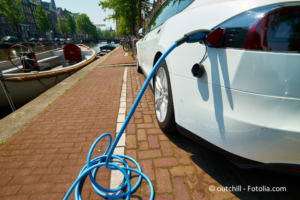Evolution2Green
Development of an overall strategy for the political management of sustainability processes
The Evolution2Green project aimed to develop an overall political concept for social change processes towards a Green Economy.
The project integrated three theoretical approaches: evolutionary economics, the models of change concept and the basic strategies of efficiency, consistency and sufficiency. This was supplemented by considerations on the political governance of social change processes (transformation governance).
What path dependencies and conflicting interests make change so difficult?
In an empirical work phase, the obstacles and success factors for transformation processes toward a Green Economy were analyzed. Initially, 15 transformation field analyses were carried out, which systematically recorded different types of path dependencies.
The transformation field analyses focused on four topic areas in which there is a particular need for transformation: car mobility, agriculture and food, heat supply and raw material supply. A large number of relevant path dependencies were identified for these four topic areas and an assessment was made of how these impede possible transformation approaches.
What are the success factors for transformation processes?
In 20 case studies, the Evolution2Green project examined the processes and mechanisms of successful transformations using the models-of-change approach. Key success factors for transformation processes were derived from these case studies.

In the form of roadmaps, comprehensive strategies were developed for a path change in the three transformation fields of electromobility, heat transition and the longer use of products. They provide concrete recommendations for action on how the transformation to a Green Economy can succeed within these areas.
On the basis of the identified success factors, obstacles and courses of action for creating a transformation, steering options for politics were derived. Unsurprisingly, the world presents itself as complex in this analysis. The major socio-technical systems such as mobility, energy supply and food are bound up in a multitude of path dependencies that are of a technical, economic as well as behavioral nature.

Strategies for a path change towards a green economy
How to solve problems of mobility? Bicycles and public transport are often mentioned as answers to this question. However, the study on roads changes the view on the question. It shows how strongly mobility needs are concreted. It is only subsequently a question of choosing other types of transport. First, the distances in daily life would have to be shortened.
The search for regenerative heat sources suffers from the fact that they do exist, but many of them can only be tapped with a central heat supply through heat networks. It is not enough here to replace the heat generator in the building; an extensive network of heat pipes must first be built (as has already been done in Denmark and Sweden).
Evolution2Green presents such systemic interconnectedness of problems and proposes an equally complex approach to how we may be able to extricate ourselves from this “Gordian knot.”




